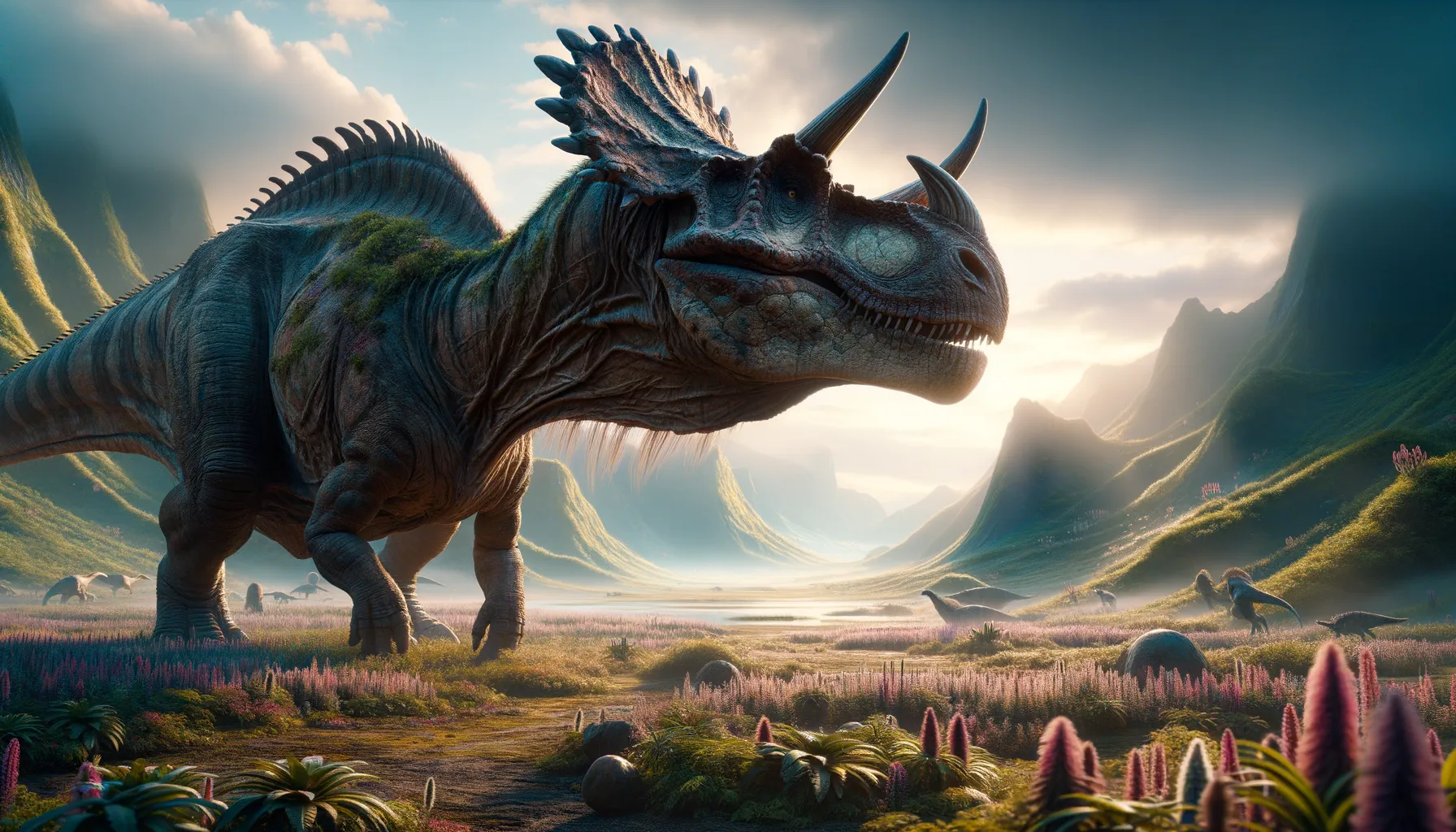
Rubeosaurus
Majestic horns meet ancient stories.
Period
Cretaceous
Length
Approximately 20 feet long.
Height
Stood about 6 feet tall at the hips.
Weight
Estimated to weigh between 2 to 3 tons.
Rubeosaurus was a large, herbivorous dinosaur known for its impressive cranial features, including a prominent frill and horns. Living during the late Cretaceous period, it roamed the area that is now North America. These dinosaurs were massive but gentle giants, relying primarily on their size and group behavior for protection against predators. Rubeosaurus played an essential role in its ecosystem by consuming vast amounts of vegetation.
Diet
Rubeosaurus was herbivorous, mainly feeding on low-lying vegetation including ferns, cycads, and flowering plants. Its beak-like mouth was well adapted to snapping tough plants and processing fibrous material.
Hunting
As a herbivore, Rubeosaurus did not engage in hunting behavior. It relied on its size and herd for safety from predators. Its main focus was foraging for plants and moving as a group to access grazing areas.
Environmental challenges
Rubeosaurus faced significant challenges from predators such as large theropods. It also contended with changing vegetation patterns during the Cretaceous period, which required adaptation to new food sources. Furthermore, climatic shifts could have affected its habitat, possibly leading to migration in search of food and more favorable conditions.
Speed
Rubeosaurus moved at a slow pace, likely due to its size.
Lifespan
Estimated to be around 50 to 70 years.
First discovery
Discovered in the late 20th century in Montana, USA.
Fun Facts
- Rubeosaurus was a herbivorous dinosaur that lived during the Late Cretaceous period, around 75 million years ago.
- This dinosaur was part of the Ceratopsidae family, which is also the family of the famous Triceratops.
- Rubeosaurus had a unique and distinctive frill adorned with spiky horns which likely played a role in communication or display.
- The name 'Rubeosaurus' means 'thorn lizard,' referring to its spiky frill.
- Fossils of Rubeosaurus have mostly been found in what is now Montana, USA.
- Rubeosaurus is thought to have been a medium-sized dinosaur, about 6 meters (20 feet) long.
- With its parrot-like beak, Rubeosaurus primarily fed on low-lying vegetation, including ferns and cycads.
Growth and Development
Young Rubeosaurus likely grew rapidly after hatching to reach a size which offered some protection from predators. Their development involved growing robust frills and horns used for defense and display. Fossil evidence suggests they went through distinct growth stages, with juveniles showing different cranial structures than adults.
Habitat
Rubeosaurus inhabited lush coastal plains with a mix of forests and open areas. These environments provided ample vegetation for foraging. Seasonal changes would have impacted the availability of food, prompting migration patterns. Rivers and freshwater sources in these regions were vital for their survival.
Interaction with other species
Rubeosaurus coexisted with various herbivorous and carnivorous dinosaurs. Its heavy frill and horns may have been used in defense against predators. This dinosaur likely engaged in herd behavior, not only for feeding but also as a strategy to deter predators through safety in numbers.
Natural lifespan
Rubeosaurus could live naturally for several decades, reaching maturity after several years.
Reproduction
Rubeosaurus reproduced by laying eggs, likely in nests constructed from plant material. Evidence suggests they may have cared for their young in some capacity. The nesting sites were potentially used by multiple females, indicating a communal aspect to breeding.
Social behaviour
These dinosaurs were believed to be social creatures, moving in herds for protection and foraging efficiency. Their social structure might have included complex communications through vocalizations and displays. Interaction within the herd could involve sorting out hierarchies using physical displays and horn clashes.
Fossil locations
Rubeosaurus fossils have primarily been found in Montana, USA. The region has yielded several ceratopsid fossils, indicating a richly populated area during the Cretaceous. These discoveries have contributed significantly to understanding ceratopsid diversification and evolution in North America.
